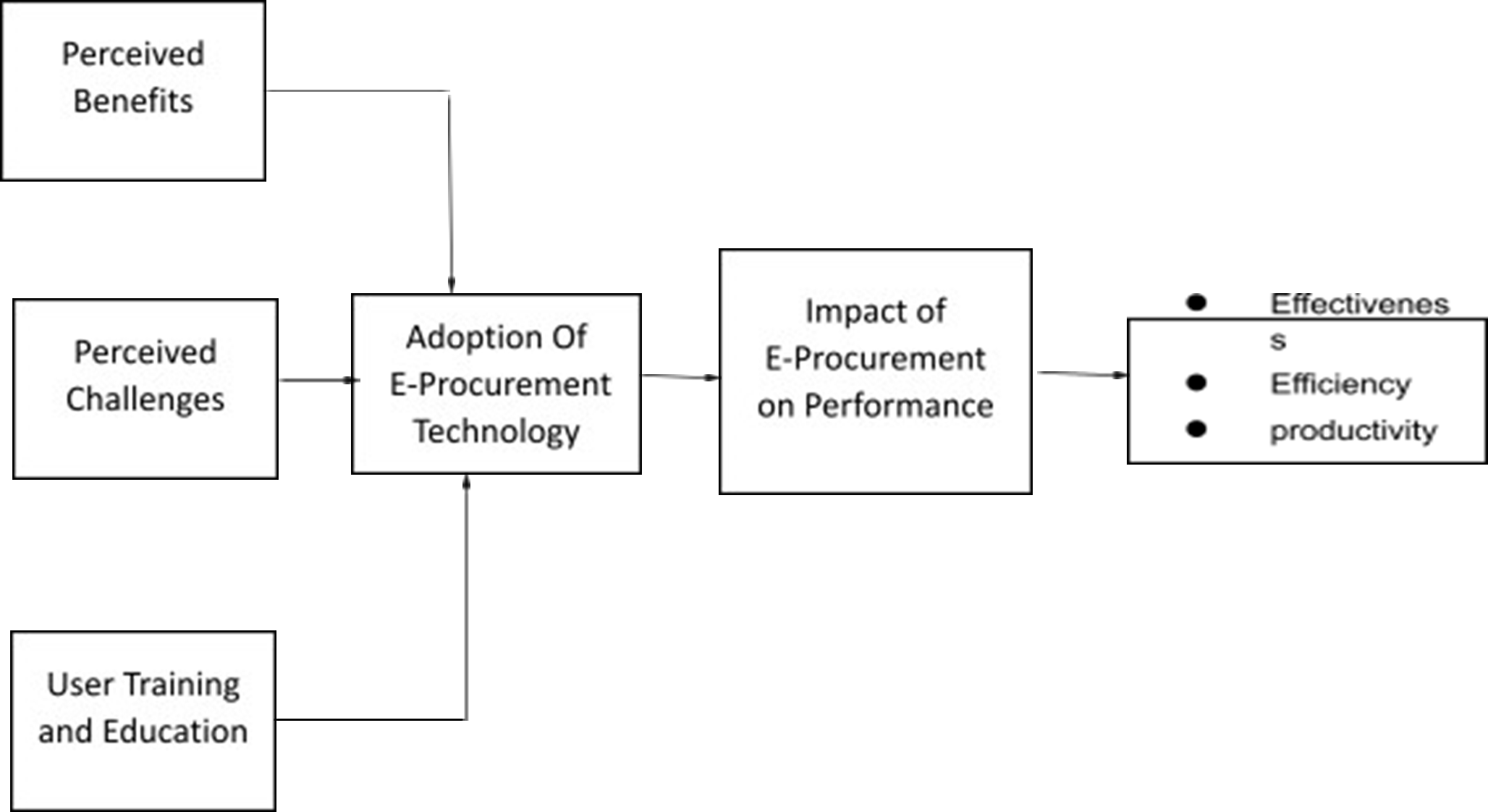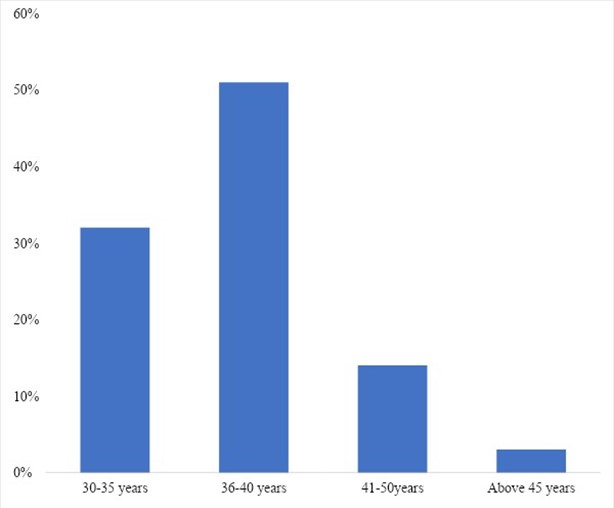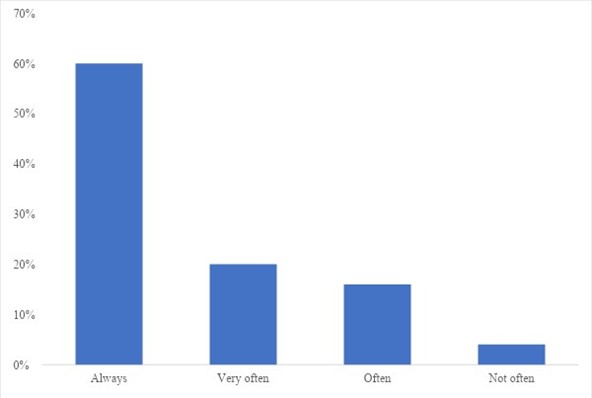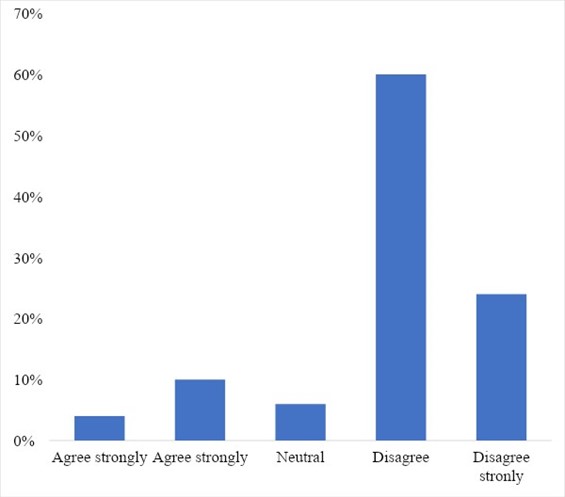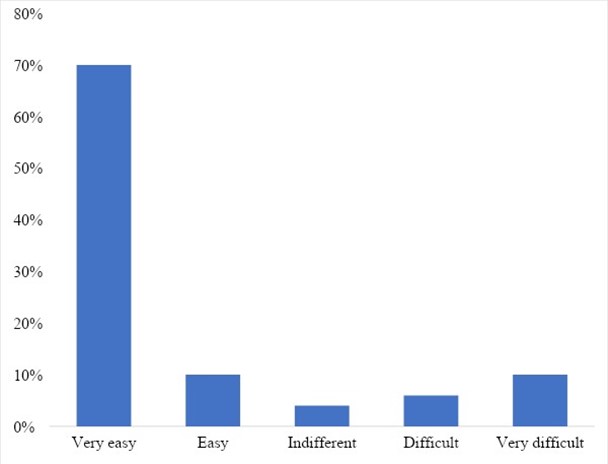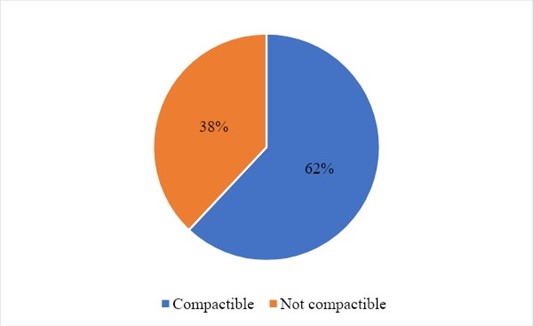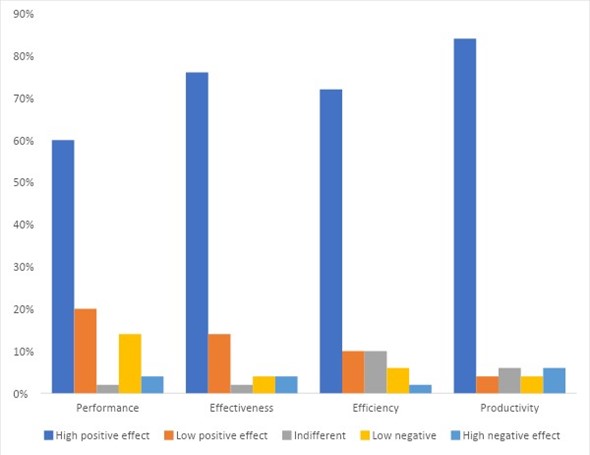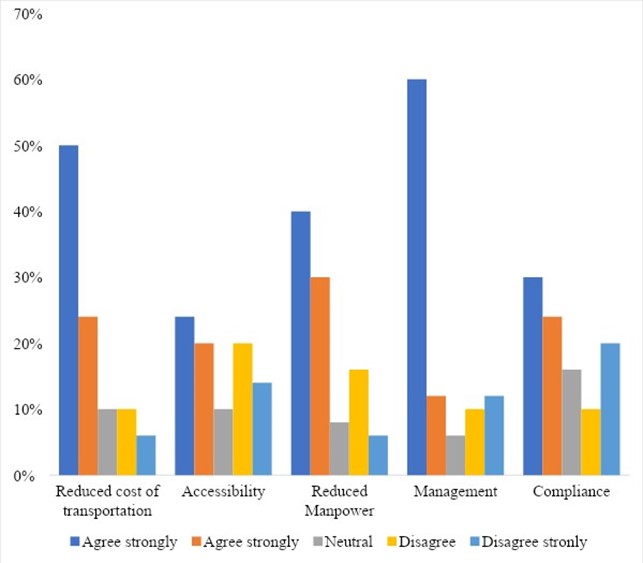Analyzing the Factors Influencing the Integration of E-Procurement use in Small and Medium Enterprise in Ghana.
- Eric Boafo Dadzie
- Bright Nyamekye
- Lord Emmanuel Yamoah
- 1207-1224
- Aug 22, 2024
- Business Management
Analyzing the Factors Influencing the Integration of E-Procurement use in Small and Medium Enterprise in Ghana.
Eric Boafo Dadzie, PhD1, Bright Nyamekye, PhD2, Lord Emmanuel Yamoah, PhD3
1Senior Lecturer, Takoradi Technical University, Procurement and Supply Chain Department
2Lecturer, Department of Procurement, Supply chain Management
3Lecturer, Takoradi Technical University, Procurement and Supply Chain Department, Member Institute of Directors
DOI: https://doi.org/10.51244/IJRSI.2024.1107095
Received: 11 July 2024; Revised: 24 July 2024; Accepted: 27 July 2024; Published: 22 August 2024
ABSTRACT
The study aims at assessing the usage of Electronic Procurement systems among Ghanaian SMEs, and the aggregate effect it has on firm’s growth. This research was carried out to (1) determine the amount of e-procurement use among SMEs in Ghana, (2) determine the influence of e-procurement on the productivity of Ghanaian SMEs, and (3) determine the primary problems associated with adopting e-procurement in Ghana, among other things. Using a quantitative research approach, primary data was acquired from 100 respondents using easy sampling and an online survey, with the help of which the data was analyzed. A version of the SPSS data analysis program, version 22, was used to conduct the analysis. At the conclusion of the survey, it was discovered that the current procurement system in use is the e-procurement technique, which is used by the vast majority of SMEs on a consistent basis. The majority of them had a good understanding of e-procurement and were comfortable with its dynamics. Also shown by the research is that the adoption of e-procurement techniques contributes to a rise in the performance, effectiveness, and efficiency of organizations, resulting in an increase in their total production. Individuals, however, have unfavourable opinions of e-procurement as a result of some significant obstacles involved with its use, which are detailed below. Internet access and inadequate internet connection were among the key issues mentioned, as were data system hacking, training needs, availability, and technological and skill gaps, among others.
Keywords: E-Procurement, Small and Medium Firms, Purchasing and Sales
INTRODUCTION
Background to the study
The overall performance of Small and medium enterprises (SMEs) is paramount for economic growth and development due to the immense contributions SMEs make to a country’s gross domestic product (Obi et al., 2018). In Ghana, SMEs offer jobs to 85% of the workforce in the manufacturing sector and contributes to about 70% of Ghana’s GDP (Agyeman, 2019). Elevating the performance of SMEs imply that Ghana’s macroeconomic performance could improve further. However, Pedauga et al. (2021) find that SMEs are the most hard-hit groups who have suffered the adverse impacts of economic conditions. Due to their relatively small size (of about 9 employees and an investment capital of ~GHC 50,000), most SMEs are unable to invest in advance and remote systems. Owing to the current pandemic, e-procurement has become a necessary part of most firms, both small and large, because, the benefits of remote systems in procurement and firms’ transactions cannot be overemphasized (Brandon-Jones, 2017).
E-Procurement, which is also referred to as electronic procurement or supplier exchange, is the transaction of supplies, equipment, works and services through a web interface or other networked system (Aminah et al., 2018). The essence of e-procurement is to facilitate company’s’ growth by increasing performance, thus, through efficiency, effectiveness and total cost reduction in the procurement process. Adopting e-procurement systems in a more effective and efficient manner could bolster performance by increasing net profit. This could be achieved in a highly improved procurement system that is effective and efficient. The use of internet and modern technology has led to astonishing speed in the growth of SMEs in the form of electronic business which makes transactions far easier and faster. It has created many effects especially in the fields of procurement when dealing with various customers and clients. Ali & Fan (2021) posit that most organizations spend a higher fraction of aggregate revenue on buying and in this way, the use of ICT aids the process and at the same time makes it more efficient by removing major barriers and wastes in the procurement process.
The advancement of ICT brings a big change in the business environment and how organizations transact. Due to the quality output and information sharing, businesses are given higher expectations. E-procurement enhances performance of procurement by reducing transaction costs but most critically by reducing fragmentation in the procurement process. E-procurement is used as a means to sanitize the procurement procedures for the benefits of all who are inclined to it. However, studies show that adoption of e-procurement differs across sectors and across organizations. As a matter of fact, e-procurement is at the initial stages of adoption in Ghana in both the private and public organizations. Therefore, there is little empirical evidence to ascertain how e-procurement influences firms’ performance in Ghana, especially in the midst of global economic crisis. Conducting studies that provide empirical findings to this effect could help improve e-procurement systems in Ghana.
Problem Statement
The current impact of economic down turn has limited human interactions and hence, the procurement of goods and services. This explains why most SMEs have been woefully impacted by the global pandemic (Bartik et al., 2020). It requires that a more smart and advance method of procurement system is needed. Enhancing electronic procurement among SMEs implies that more empirical findings are needed to make decisions and formulate helpful policies for optimal benefit of the e-procurement system. Such knowledge is non-existing in Ghana. Even though, Dangmei (2016) focused on challenges in E-procurement systems in the public sector, there was no indication in the private sector. This has necessitated the need for more recent studies to get accurate and reliable information to strengthen the electronic procurement systems among SMEs in Ghana. In this view, there is a need to establish factors that would not inhibit implementation of e-Procurement systems. This will help SMEs to identify and manage the possible distracters to Electronic Procurement in their organizations. Due to this there is a gapin literature that has been created. It is against this backdrop that the study set out to address some of these challenges thereby proffering measures that can bring about the possibility of addressing them.
Research Objectives
General Objective
The study aims at assessing the usage of Electronic Procurement systems among Ghanaian SMEs, and the aggregate effect it has on firm’s growth. The following are the specific
Specific Objectives
- To examine the level of usage of e-procurement systems among SMEs in Ghana
- To ascertain the effect of e-procurement on the performance of Ghanaian SMEs
- To analyze the major challenges of using e-procurement systems among SMEs in Ghana.
Research Questions
- What is the level of usage of e-procurement systems among SMEs in Ghana?
- Does electronic procurement affect the performance of SMEs?
- What are the major challenges faced by SMEs in utilizing electronic procurement systems?
Scope of work
The study explores concepts, models and theories covering e-procurement. The geographical scope is limited to sample SMEs within Accra metropolitan Assembly, Ghana-West Africa. The study explores the usage challenges and strategies in the electronic procurement systems.
LITERATURE REVIEW
The concept of procurement
In a broader view, procurement is defined as the procedures involved in receiving or purchasing goods and services. This involves series of processes starting from preparation of demand and submission of end receipt to be approved (Rahmani et al., 2021). The procurement process encompasses buying, setting of product specifications, research and brand development, negotiations and other related activities (Moretto et al., 2017). According to (Bag et al., 2020), procurement process is characterized by selecting vendors, establishing payment terms, strategic vetting, selection, the negotiation of contracts and actual purchasing of goods which aims at procuring all of the goods, services, and work that is vital to an organization. Similarly, Laudares et al. (2019) define procurement as the process of finding and agreeing to terms, and acquiring goods, services, or works from an external source, often via a tendering or competitive bidding process. The procurement process controls quantity, quality, sourcing and timing to ensure the best possible total cost of ownership. Within public companies, procurement process is strictly monitored to aid in promoting an unbiased and open competition as well as eliminate all forms of corruption to achieve the best possible result (Adjei-Bamfo & Maloreh-Nyamekye, 2019). In other definitions, procurement connotes the activities of acquiring the right resources in their right ratio that is delivered within the specified time period at the right place where those materials are needed and from the right sources (Konys, 2019). Timeliness is another essential component of procurement as delays could interrupt the whole setup of the procurement process. Usually, procurement is considered as a part of a firm’s input to production. This makes it an essential component in the business setting. Procurement is necessary for the success and hence it is required for buyers to procure the best quality of goods or services at the most competitive rates.
E-Procurement
E-Procurement is the modern form of procurement that utilizes advance technology, internet and networking systems (Bag et al., 2020). The e-procurement system considers purchases that are made through online systems or over some digital network or platforms. This is a rather broad description of many transactions that happen based on modern technologies and business and vendor partnerships. Electronic procurement entails the deployment of ICT in every stage of the buying phase from identification of requirement through to payment and potentially to contract management (Saastamoinen et al., 2018). It is ideal to note that e-procurement excludes old applications like ordering with telephone but includes the use of internet, intranet and extranet applications in the purchasing process. Added, e-procurement includes the online purchasing of goods and service for the day-to-day operations of a business and authorizing the whole procedure with the underlying aim of reducing costs. A good implementation of e-procurement does not merely enhance online purchases but it connects companies and their business process directly with suppliers while managing all interaction between them (Saastamoinen et al., 2018).
It is more relevant as it uses an electronic data transfer in the process to facilitate planned procurement. In recent years Currently, electronic procurement is facilitated by the use of information technology which has brought a massive transformation in the procurement systems. However, the evolution of E-procurement began with traditional procurement which was mainly paper-based. The recent development of e-procurement makes use of E-mail, website, Internet tools and platforms to complement traditional procurement. The benefits of e-procurement are enormous as discussed below.
Benefits of e-procurement
The e-procurement system is associated with several benefits of which the most significant ones have been discussed as follows.
Firstly, e-procurement provides what is termed as transactional benefits (Kumar & Ganguly, 2021). This feature makes transactions more flexible thereby enhancing speed, efficiency, and effectiveness in the transaction process. Through e-procurement, most of the wastes are eliminated in transactions. Also, e-procurement leads to compliance (Adeniyi et al., 2020). The e-procurement process helps to tackle most of the compliance challenges in procurement process and it reliefs most organizations from such hurdles because it has been a major issue they battle with. With the use of e-procurement tools including catalogs. Further, e-procurement is essential for the management of information. It helps management to get accurate information without much stress. Management can gain financially from this process as well as gather rich data for analysis and decisions. Added, e-procurement systems help to beat price down to the lowest level because it improves on the ability to negotiate due to increased confidence of clients in the system (Harelimana, 2018). It promotes trust and reliability. Further, e-procurement enhances payment by making it easier and faster and less cumbersome. There is a possibility to generate electronic invoices without necessary walking to the offices for invoices. Other benefits include reduction in manpower. The e-procurement system helps in reducing manpower in the procurement process to the minimum extent. This aids in substituting the traditional process of paper activities with a paperless e-procurement system.
Effect of e-procurement on productivity
E-procurement has several impacts on the performance of firms. It is argued that one of the main reasons for E-procurement is to increase organizational efficiency and productivity (Ngeno & Kinoti, 2017). This is possible as the system helps in B2B purchasing by streamlining the buying process and providing the information needed to make more effective purchasing decisions. Some of the ways that e-procurement helps in increasing productivity is by helping to reduce transaction costs, improve internal procurement process efficiency, and increase collaboration with suppliers (Mutangili, 2019). Productivity is highly achieved when e-procurement activities are able to automate the procurement process giving rise to a more efficient delivery of work and buttressed with a high coordination among organizations. Further, e-procurement systems could help in reducing the cost of goods and administrative costs (Lucca, 2019). There is the assertion that the benefits of E-procurement comes either in the hard form where there is price and cost saving or soft benefits where there is time saving through an efficient process (Lucca, 2019). There could also be intangible benefits which come in the form of culture change, elimination of bureaucracy and a stress-free process. The e-procurement process facilitates marketing activities by making it easier and less stressful (Tiwari et al., 2019).
Theories/Models of e-procurement
This section reviews prominent theories in relation to procurement systems. In due regards the adoption theory has been linked to e-procurement concepts. This gives a summary or overview of the adoption theory, assumptions, relevance, criticisms, as well as its linkages with e-procurement systems.
Technology acceptance model
The model was developed by Fred Davis and Richard Bagozzi 1992. The core idea of the model is centered around the mode of acceptance and use of new technology by users. Adoption theory examines the individual and the choices an individual makes to accept or reject a particular innovation (Al-Emran et al., 2018). In this model, adoption is not only the choice to accept an innovation but also the extent to which that innovation is integrated into the appropriate context (Rahimi et al., 2018). The theory argues that technology adoption and usage is influenced by key elements such as Behavioural intention which is determined by the attitude of users about the general impression of the technology. The model further makes an assertion that several factors could determine how and when users adopt a new technology. The first factor is user’s perception about the importance of the technology in promoting their job performance. The second factor is the perceived ease of use which is established on the basis that people tend to consider the ease or difficulties in a technology usage. Easy to use technologies are more likely to be adopted than a more complicated one (Scherer et al., 2019). Also, External variables sincluding social influence is an important factor to determine the attitude.
The theory assumes that when someone forms an intention to act, that they will be free to act without limitation. In the real world there will be many constraints, such as limited freedom to act (Al-Rahmi et al., 2019). The model has been useful in explaining how firms and individuals adapt to new technologies and the impending challenges of its adaptation as well as the solutions to overcome such difficulties (Verma et al., 2018).
Empirical Review
Review on the usage of e-procurement
Afolabi et al. (2019) examine the factors that determine success in e-Procurement systems utilization in the Nigerian construction industry using 6 regions for the study. The study was based on survey research design technique and the sample approach adopted was the purposive and random sampling methods. The research was conducted with samples of 759 users of e-Procurement systems. Results on the study were based on descriptive statistics and principal component analysis (PCA). It was found that the use of e-procurement was common among quantity surveyors. Also, a significant fraction of the construction stakeholders utilizes e-procurement. Further findings revealed that contracting firms were the most users of e-Procurement systems enhanced by regular access to reliable, affordable, and fast Internet services.
Afolabi et al. (2020) conducted a study to examine the grey areas that occurred in public procurement systems to help prescribe best practices in the procurement systems. The method for conducting the research was survey technique of which questionnaire was used as the data collection instrument. The study adopted the two-stage sampling approach where 759 construction stakeholders were used as the study respondents. The findings reveal the essence of e-Procurement tools and technologies which helps to announce/notify, exchange project information, conduct tendering and submission of a proposal, notification on the award of contract, monitor the progress of work, and make/receive payment for work done in the public procurement sector. Thus, revealing the grey areas of procurement processes that need upgrade.
Tutu et al. (2019) examines the indicators that are relevant in implementing Ghana’s e-procurement systems. The study was conducted to involve 60 procurement professionals where results for the analysis was based on the mean score ranking test. The findings indicate that the key factors influencing e-procurement systems are internet, power stability, capacity enhancement of procurement officers, and availability of infrastructure.
Hassan et al. (2017) test the impact of certain factors on e-procurement usage with data gathered from 151 small and medium enterprises in New Zealand’s manufacturing sector. The findings reveal that the extent of e-procurement usage is determined by varying factors. Most commonly, e-procurement usage was dependent on the perceptions of relative advantage gained in using e-procurement, and external pressure from suppliers and competitors to use e-procurement. Other relevant factors promoting e-procurement usage include suitability of e-procurement with organisational values, practices, technology infrastructure, and strategy. Ibem et al. (2021) inquired about e-conducted a study on e-procurement usage among construction workers in Nigeria. The study was conducted with 759 users of e-Procurement systems. The data relied on descriptive statistics and factor analysis techniques where it was revealed that e-procurement is basically used in sending and receiving information on tender opportunities, tendering, and making and receiving payments, however, such usage was enhanced by the adequacy and reliability of Internet services and modern technologies.
Effect of e-procurement on performance
Sánchez-Rodríguez et al. (2020) analyze how the use of e-procurement in small and medium-sized enterprises (SMEs) affects organizational activities and output. By adopting hypothesis testing approach, a sample of 199 managers were selected from SMEs in manufacturing. The results show that a significant relationship exists between e-procurement in SMEs. Further, e-procurement was found to have positive impacts on the procurement process and business performance.
Masudin et al. (2021) analyse how e-procurement affected the performance of manufacturing firms in Indonesia with emphasis on top management support, information quality, implementation of e-procurement, and company performance. The study data was analysed using questionnaires. The findings show that the key variables that affect e-procurement implementation are management support, and the quality of information flow. The findings depict that success in e-procurement systems have positive effect on firms’ performances.
Waithaka & Kimani (2021) study the linkages between e-procurement activities and supply chain performance with focus on efficiency and effectiveness of the supply chain that could be attributed by the e-procurement setup. The study’s analyses were based on findings of previous literature on the subject matter. The results indicate that achieving positive outcomes in e-procurement performance helps achieve organization’s success because it results in competitive purchase and attainment of quality goods that improves the organization’s market competitiveness.
Pattanayak & Punyatoya (2020) investigate the effect of e-procurement combines with supply chain technology to affect supply chain outcomes using supply chain integration. The study adopted the survey approach where 214 respondents were sampled from a construction industry. By using structural equation modelling method of analysis, the study found that the use of supply chain integration leads to a positive effect on e-procurement on the supply chain activities.
Challenges of e-procurement usage
Truong (2019) studied how distrust could affect the implementation of e-procurement systems. Data were gathered from survey technique where the respondents were purchasing professionals in the USA. The study used analysis of variance technique (ANOVA) and structural equation modelling method (SEM) were used to assess the levels of distrust among the companies under-studied. In addition, it was revealed that distrust and lack of confidence in transactions makes buyers reluctant to patronize e-procurement systems. Other findings indicate that when there is distrust, it impedes collaboration and information sharing in product development and purchasing process.
(Sarpong et al., 2017) explore the factors that inhibit e-procurement systems in Ghana by studying hospitals sampled from 10 regions of Ghana. The study adopted the survey method and issued questionnaire to all respondents. The responses were analyzed with structural equation model (SEM) to depict the existing association between E-procurement challenges and E-procurement usage and other intervening indicators. The findings show that the challenges faced in the e-procurement systems include limited IT infrastructure, lack of adequate legal environment and corrupt practices of officers.
Asare, Evelyn Nsiah and Prempeh (2017) assess factors that influences the implementation of e-procurement in Technical Universities in Ghana using the Survey research approach. Data was gathered through issued to 100 respondents from Technical Universities. The sampling method adopted in choosing respondents is purposive sampling. The study analysis was done with Kaiser-Meyer-Oklin and Barlett’s test and factor analysis. The results indicate that ICT infrastructure, public procurement regulations, management commitment and staff competence influence successes in e-procurement systems.
Conceptual Framework
The conceptual framework of the study is shown in Figure 2.1. The framework indicates that perceived benefits, perceived challenges and user training and education on e-procurement technologies affect the adoption of e-procurement. Nonetheless, when it is adopted, there is impact of e-procurement on performance as it affects efficiency, effectiveness and productivity.
Source Author’s Construct
METHODOLOGY
Introduction
This chapter explains the procedure, methods and techniques used in carrying out the research. It deals with the population and sampling techniques used, data collection procedure, research design and data analysis.
Study Design
Design, in research refers to, the entire plan that links the conceptual study to the empirical research by using either qualitative method, quantitative method or both (Rahi, 2017). The quantitative approach analyzes and interprets numerical data whilst qualitative approach analyzes non-numerical data. However, the current study uses the quantitative research design. This implies that only quantitative (numerical) data have been used for study results and analysis. It is argued that, to be able to predict the exact relationship between variables, using quantitative method gives a more accurate result (Poot et al., 2018). The quantitative design as used in this study ensures that all the components of the study have been integrated logically to answer the research objectives.
Population
The study population includes all small and medium enterprises (SMEs) in Ghana. However, the sampling is done to include only SMEs in Accra. Nonetheless, the total population size cannot be determined from any reliable source, so the study considers the population as infinite.
Sources of Data
The study uses primary data sources to make data analysis. Primary data is gathered from the study respondents through a survey instrument in the form of research questionnaire issued during an empirical visit to meet with respondents. Douglas (2015) refers to primary data as one which is collected for the first time by the researcher. Primary data sources include surveys, observations, experiments, questionnaire, and personal interview.
Sampling Procedure and Technique
Samples were chosen using convenient sampling technique. Taherdoost (2016) describe convenient sampling as a type of nonprobability sampling where members of the population are chosen based on easy accessibility to the researcher especially during data collection. It is also a good option when there is a need for availability and willingness of the participants. In the current study, a number of SMEs in Accra were contacted until 100 respondents were accessed. The study uses 100 respondents based on value judgment of the researcher. Nonetheless, a sample of 100 SMEs is representative enough to make inference of the study population. Even though there are other sampling methods such as; simple random sampling, systematic sampling, stratified sampling, snowball sampling and so on, convenient sampling is most suitable for this study because it is affordable, easy to carry out and the subjects are readily available. Taherdoost (2016) posits that the main objective of using convenience sampling is to collect information from participants who are easily accessible to the researcher and it is neither purposeful nor strategic. This sampling approach is based on the assumption that the members of the target population are homogeneous. Even though Birinci et al. (2018) pointed out that a major disadvantage of convenience sampling is that it is likely to be bias it wouldn’t be so in this study because the study population is homogenous.
Methods of Data Collection
The study uses research questionnaire as the data collection instrument. The questionnaires were distributed all 100 SMEs in Accra via online survey. All respondents were given ample time to study the questions to give their honest responses. The answered questionnaires were retrieved from the respondents as there was high assurance of confidentiality and privacy.
Ethical Considerations
Research ethics refer to the norms and attitudes followed by researchers to conduct research in a professional and regulated manner. It is argued that during the research process there is the likelihood of harms in one way or the other that may be caused as a result of interaction with participants so it is the duty of the researcher to foresee such harms and resolve them amicably (Narayan et al., 2020). Some ethical issues in this study includes; the use of correct referencing so as to avoid plagiarism. In the course of data gathering, there is assurance of confidentiality and anonymity of data as the data is restricted from third party usage. In addition, there is no incidence of academic fraud and the study presents accurate result. Dooly et al. (2017) emphasize that informed consent is the major ethical issue in conducting research. Therefore, in getting access to the research data, management of the various firms are consulted. Further, the study is conducted by observing all the research ethics and conduct in the University.
Data Reliability and Validity
This consideration is critical in research initiatives because it allows researchers to analyze the accuracy and dependability of the scales that are being used in the measurements. Internal consistency of the constructs employed in this inquiry was determined by means of the Cronbach Alpha test, which was performed on them. When the Cronbach Alpha test rate was 70% or 0.7, it was judged that the construct had weak internal consistency. Any construct reported below this level shows poor internal consistency. The validity of the measuring scale was determined by the application of the component analysis technique. To conduct an adequate factor analysis, it is necessary to have a sufficient number of key hypotheses. For example, the Kaiser-Meyer-Oklin (KMO) values must be at least 50 percent (0.50) and the probability of Bartlett’s Test of Sphericity must be statistically significant in order to be considered statistically valid (p-value less than 0.05). Aside from that, the factor loadings of the components or items must be larger than 0.6, and the Average Variance Extracted (AVE) must be greater than 0.5 or equal to one, respectively (Shrestha, 2021).
Data Analysis
After the data is gathered, it was coded and analyzed using IBM SPSS software. Descriptive and inferential statistical techniques were employed for data analysis. According to Amin (2005) descriptive statistics offer us with the techniques of numerically and graphically presenting information that provides an overall picture of the data collected.
RESULTS AND DISCUSSION
Introduction
As earlier discussed, the study aims to identify the level of usage of e-procurement among small and medium enterprises in Ghana; ascertain the effect of e-procurement on the performance of Ghanaian SMEs and analyze the major challenges of using e-procurement systems among SMEs in Ghana. Therefore, this chapter gives a presentation, analysis, and discussion of results from data collected during the survey. This is done in the form of tables and diagrams which enhances a clearer understanding of the discussion.
Demographic characteristics of respondents
Gender of respondent
The gender of respondents shows in figure 4.1 that out of 100 respondents that took part of the survey, 86% were males and 14% were females.
Figure 4. 1 Gender
Source: Fieldwork (2021)
Age of respondent
Out of 100 respondents who took part of the survey, 32% were from 30-35 years, 51% were from 36-40 years, 14% were 41 – 45 years and 3% were above 45. The modal age of respondents is 36 to 40 years.
Figure 4. 2 Age of Respondent
Source: Fieldwork (2021)
Education level of respondent
The study result shows that 28% of respondents had diploma, 30% had HND, 30% had bachelors’ degree and 12% had their Masters’ degree.
Figure 4. 3 Education
Source: Fieldwork (2021)
Usage of e-procurement
How often respondents use e-procurement
According to 60% of respondents who participated in the survey, they have been using e-procurement always, 20% said they use it very often, 16% said they use it often and 4% said they use it but not often. The modal response indicates that majority of SMEs use e-procurement always.
Figure 4. 4 Usage of e-procurement
Source: Fieldwork (2021)
Flexibility of e-procurement usage
According to the survey results, 50% of respondents agreed strongly that e-procurement method is flexible, 20% agreed, 4% had a neutral view and hence neither agreed nor disagreed. On the contrary, 10% disagreed and hence believed that e-procurement method is not flexible and 16% disagreed strongly.
Effect of e-procurement on time consumption
According to the survey results, 4% of respondents agreed strongly that e-procurement method wastes time, 10% agreed, 6% had a neutral view and hence neither agreed nor disagreed that it wastes time. On the contrary, 60% disagreed and hence believed that e-procurement method does not waste time and 24% disagreed strongly and hence believe that e-procurement method does not waste time at all. The time wasting maybe due to technological, technical challenges encountered in the process of using the e-procurement systems as well as inadequate knowledge of users of the system.
Figure 4. 5 Effect of e-procurement on time
Source: Fieldwork (2021)
Moving from traditional method to e-procurement
Out of 100 respondents who took part of the survey, 70% said it is very easy to move from traditional procurement method to e-procurement, 10% said it is easy, 4% were indifferent, 6% said it is difficult and the remaining 10% said it is very difficult to move from traditional procurement method to e-procurement.
Figure 4. 6 Moving from paper to e-procurement method
Source: Fieldwork (2021)
Respondent’s views whether e-procurement system is compatible with the organizational policies and tools
Among the respondents who took the survey, 62% said that e-procurement is compatible with their organizational policies and tools and 38% did not agree that e-procurement is compatible with their organizational policies and tools.
Figure 4. 7 Compatibility of e-procurement with organizational policies
Source: Fieldwork (2021)
Effect of e-procurement on productivity variables
Impact on Performance
According to the study results, 60% of the SMEs who took part of the survey agreed that e-procurement brings a high positive effect on their performance, 20% said it brings a low positive effect, 2% were indifferent, 14% said it brings a low negative effect and 4% said it brings a high negative effect on their performance.
Impact on Effectiveness
According to the study results, 76% of SMEs who took part of the survey agreed that e-procurement brings a high positive effect on their effectiveness, 14% said it brings a low positive effect, 2% were indifferent, 4% said it brings a low negative effect and 4% said it brings a high negative effect on their effectiveness.
Impact on Efficiency
The survey responses show that 72% of SMEs who took part of the survey agreed that e-procurement brings a high positive effect on their efficiency, 10% said it brings a low positive effect, 10% were indifferent, 6% said it brings a low negative effect and 2% said it brings a high negative effect on their efficiency.
Impact on productivity
Also, 84% of respondents who took part of the survey agreed that e-procurement affects their productivity, and its impact is highly positive, 4% said it brings a low positive effect, 6% were indifferent, 4% said it brings a low negative effect and 6% said it brings a highly negative effect on their productivity.
Figure 4. 8 Impact of e-procurement
Source: Fieldwork (2021)
Other benefits of e-procurement
The study results show that e-procurement had other benefits. These benefits have been presented in below:
Reduced cost of transaction
Among the respondents, 74% were of the view that e-procurement brings about lower cost of transaction out of which 50% agreed strongly and 24% agreed. Another 10% were indifferent and the remaining 16% were having a contrary view and hence did not believe that e-procurement brings about lower transaction cost out of which 10% disagreed and 6% disagreed strongly.
Accessibility
About 54% were of the view that e-procurement brings benefit to SMEs because it is accessible. Out of those who said it is accessible, 24% agreed strongly and 20% agreed. Another 10% were indifferent and the remaining 34% were having a contrary view and hence did not believe that e-procurement accessible. Out of this, 20% disagreed and 14% disagreed strongly.
Reduced manpower
Responses from 70% of the survey participants show that e-procurement brings about reduced manpower during business transaction. Amongst them 40% agreed strongly and 30% agreed. Another 8% were indifferent and the remaining 22% were having a contrary view and hence did not believe that e-procurement brings about reduced manpower during transactions. Out of those who did not agree, 16% disagreed and 6% disagreed strongly.
Management information benefits
The views of respondents on e-procurement on management information indicate that 72% support that e-procurement brings about management information benefit of which 60% agreed strongly and 12% agreed. Another 6% were indifferent and the remaining 22% were having a contrary view and hence did not believe that e-procurement brings about management information benefit. Amongst them, 10% disagreed and 12% disagreed strongly.
Figure 4. 9 Benefits of e-procurement
Source: Fieldwork (2021)
Discussion
Demographic
The study results show that most of the respondents were males with a modal age of 36-40 years with majority of them either having HND or bachelor’s degree. The demographic information given show that respondents have the ability to learn and understand how e-procurement software is used by basing on their educational qualification since all of them are literates. This agrees with the view shared by Zoraja (2011) that e-procurement usage has a reflection with the user’s educational background and hence concluded that only those with high literacy levels can use it correctly. Gallego-Alvarez et al (2010) argue that demographic variables affect e-procurement usage.
E-procurement usage
Ghanaian SMEs have been using e-procurement on regular basis even before the implementation of the national e-procurement agenda by the government. This would help the national agenda to reduce corruption and the various challenges associated with the traditional procurement methods. Even though some users are not comfortable with its flexibility, majority of them are very comfortable with the level of flexibility with its usage. Others complain that it does not help to save time and this could be true if the users are not able to get easy access due to poor internet connection, and inadequate knowledge and skills. Some contractors also found it quite difficult migrating from the traditional method to the electronic system because they were not ready for it. Another important matter that must be discussed on its usage is the issue of organizational policy compatibility. Some contractors did not see it compactible with their organizational procedures and policies and hence they needed to make some adjustment to it.
This corresponds with the claims made by; McCue and Roman (2012), World Bank (2003) Bailey et al (2008) and UN Procurement handbook (2012) who were of the views that e-procurement usage is popular even in the SMEs. They also shared a similar opinion about the flexibility, in the use of e-procurement.
Effect of e-procurement on productivity
The results show that most of the respondents who are SMEs agree to it that e-procurement has significant impact on productivity as it impacts positively on performance, effectiveness, efficiency and all these have a rippling effect on productivity.
This corresponds with the findings made by; Stephens and Valverde (2013); Ionescu (2013);
Barbieri & Zanoni (2005); Gardenal (2013) Hsin Chang and Hsu (2013); Concha et al (2012); Toktas-Palut et al. (2014); and Shakya (2012) who argued differently that e-procurement helps to increase performance, effectiveness, efficiency and productivity. Nonetheless, not all the study respondents agreed to it due to the challenges associated with its usage.
Challenges of e-procurement
The results indicate that most of the challenges identified by users of e-procurement system has to do with technology, internet access issues and poor internet connectivity, knowledge and skills gap, cost of acquiring e-procurement software and also, implementation problems. The argument reveals that e-procurement system needs some level of knowledge and skills to operate and some contractors do not possess such skills making usage difficult. However, aside skills, there is a general issue of poor internet access and poor internet connectivity in many parts of Ghana and that poses a challenge to the use of e-procurement. Similar challenges were identified by Hampton et al. (2012), Premkumar (2003), (Jeyaraj et al., 2006) and Ifinedo (2011)
SUMMARY CONCLUSION AND RECOMMENDATIONS
Introduction
This chapter highlights the major discussions of the study. The findings are outlined in direct response to the specific objectives of the research.
Summary of findings
Usage of E-Procurement Systems among SMEs in Ghana
The first objective of the study was to find out the usage of e-procurement system among SMEs in Ghana. From the data collected and analysis given, the respondents agreed that the current procurement system practiced is the e-procurement method and majority of them use it always. Most of them had adequate knowledge about e-procurement and were ok with its dynamics. In general, there has been some reasonable consensus that seems to suggest that the first object is met.
Effect of E-Procurement on the Performance of Ghanaian SMEs
Secondly, the study aimed to investigate the effect of e-procurement on productivity indicators, thus, performance, effectiveness, efficiency, and overall productivity of the contractors. The responses show that amongst majority of respondents, e-procurement makes them increase in performance, effectiveness, and efficiency and hence it has a positive impact on their overall productivity. Also, respondents approved of E-procurement suitability highly possible, should these conditions be provided in the company. Following from this are the benefits presented for assessment.
Challenges of Using E-Procurement Systems among SMEs in Ghana.
The third and final objective was to explore the potential challenges of implementing E-procurement in SMEs. The primary challenges were common and heavily endorsed by respondent contacted. From the fieldwork, majority of the respondents strongly disagreed on most of the challenges presented to them. On the other hand, it was fairly predictable that e-procurement adoption would be viewed by respondents as a challenge. Out of the challenges presented; data system hacking, training requirement, availability of E-procurement and resistance to change were the challenges the respondents agreed will be a problem to the company. This may be explained by the fact that humans generally resist to change initially. It was however, interesting to note that, some respondents believed that issues regarding professionalism is not a challenge in adopting E-procurement. This can be attributed to the optimism that e-procurement can plug inefficiencies and practically expose wrong doings in procurement.
Conclusion
The study concludes that e-procurement is well accepted and used by SMEs and majority appreciate its usage due to their views that it impacts positively on their performance, effectiveness, efficiency, and the overall productivity. However, due to the major challenges that come with the use of e-procurement including but not limited to poor internet connectivity, high cost of e-procurement software, low level technology and inadequate knowledge and skills in the e-procurement usage, some contractors are not comfortable with its usage because it rather ends up wasting their time and making them inefficient. In order to make e-procurement very useful measures should be put in place to upgrade internet options to 4G, software cost must be subsidized, there should be improved access to technology for e-procurement users and also there should be regular training for users.
Recommendations
Government should help train and educate all SMEs to get adequate skills and knowledge in the use of e-procurement. The trainings can be in the form of seminars, workshop, and short courses. There should be a national software system for e-procurement of the same standard that will be at subsidized cost to reduce the high cost of acquiring e-procurement software. This will encourage most government agencies and SMEs to patronize its usage in place of the traditional system of procurement.
REFERENCE
- Al-Emran, M., Mezhuyev, V., & Kamaludin, A. (2018). Technology Acceptance Model in M-learning context: A systematic review. Computers & Education, 125, 389-412.
- Al-Rahmi, W. M., Yahaya, N., Aldraiweesh, A. A., Alamri, M. M., Aljarboa, N. A., Alturki, U., & Aljeraiwi, A. A. (2019). Integrating technology acceptance model with innovation diffusion theory: An empirical investigation on students’ intention to use E-learning systems. IEEE Access, 7, 26797-26809.
- Adeniyi, O., Ojo, L. D., Idowu, O. A., & Kolawole, S. B. (2020). Compliance with the stipulated procurement process in local governments: A case from a developing nation. International Journal of Procurement Management, 13(5), 678–700. https://doi.org/10.1504/IJPM.2020.110083
- Adjei-Bamfo, P., & Maloreh-Nyamekye, T. (2019). The “baby steps” in mainstreaming sustainable public procurement in Ghana: A “double-agency” perspective. Journal of Public Affairs, 19(1), 1–16. https://doi.org/10.1002/pa.1902
- Afolabi, A., Ibem, E., Aduwo, E., & Tunji-Olayeni, P. (2020). Digitizing the grey areas in the Nigerian public procurement system using e-Procurement technologies. International Journal of Construction Management, 0(0), 1–10. https://doi.org/10.1080/15623599.2020.1774836
- Afolabi, A., Ibem, E., Aduwo, E., Tunji-Olayeni, P., & Oluwunmi, O. (2019). Critical success factors (CSFs) for e-procurement adoption in the Nigerian construction industry. Buildings, 9(2). https://doi.org/10.3390/buildings9020047
- Agyeman, G. (2019, June 9). Start-Ups and SMEs Contribution to Ghana ’ s Economy. News Ghana. https://newsghana.com.gh/start-ups-and-smes-contribution-to-ghanas-economy/
- Ali, A., & Fan, Z. (2021). The Role of Capital Expenditure Forecasts in Debt Contracting. Angewandte Chemie International Edition, 6(11), 951–952. https://papers.ssrn.com/sol3/papers.cfm?abstract_id=3036266
- Aminah, S., Ditari, Y., Kumaralalita, L., Hidayanto, A. N., Phusavat, K., & Anussornnitisarn, P. (2018). E-procurement system success factors and their impact on transparency perceptions: Perspectives from the supplier side. Electronic Government, 14(2), 177–199. https://doi.org/10.1504/EG.2018.090929
- Anthony, A. (2018). & DEVELOPMENT The Use of E- South African Public Procurement Law: Challenges and. Law, Democracy and Development, 22, 39–48.
- Asare, Evelyn Nsiah and Prempeh, K. B. (2017). An empirical assessment of factors that influence the implementation of e-procurement in technical universities in Ghana. Munich Personal RePEc Archive, 6(9), 52–60. https://doi.org/10.1108/IJCHM-09-2016-0506
- Tutu, S. O., Kissi, E., Osei-Tutu, E., & Desmond, A. (2019). Evaluating critical factors for the implementation of e-procurement in Ghana. International Journal of Procurement
- Ayyagari, M., Beck, T. and Demirguc-Kunt, A., (2007). Small and medium enterprises across the globe. Small business economics, 29(4), pp.415-434.
- Shrestha, N., (2021). Factor analysis as a tool for survey analysis. American Journal of Applied Mathematics and Statistics, 9(1), pp.4-11.

